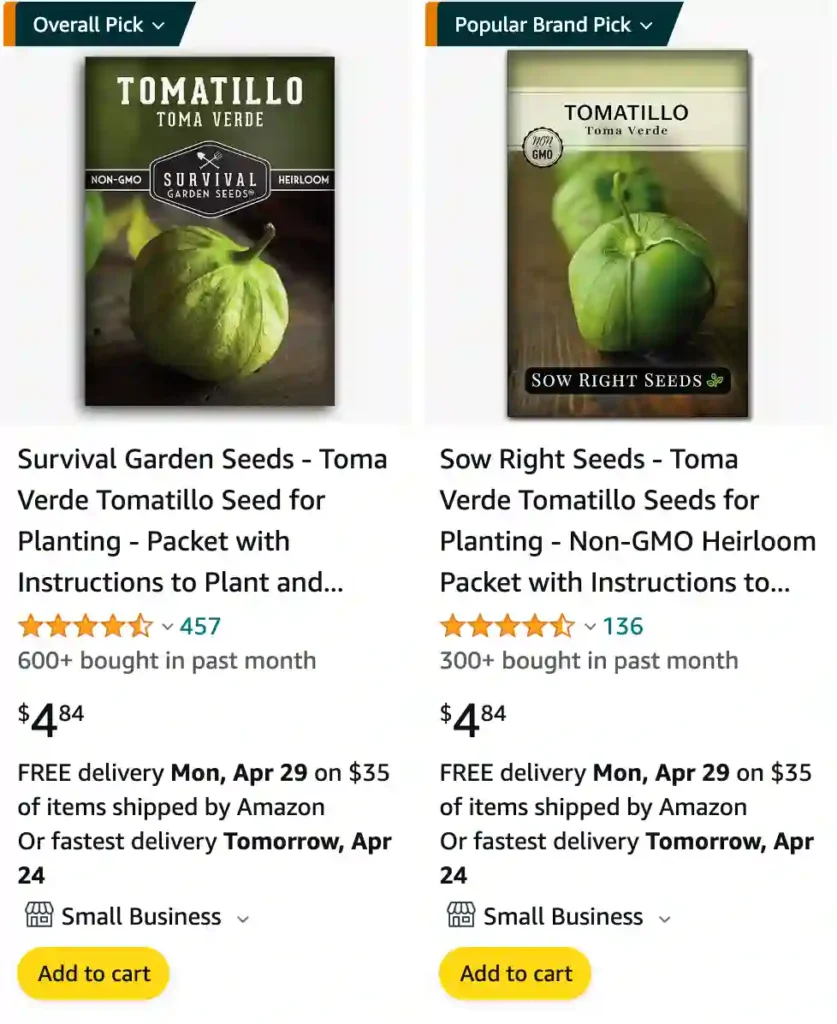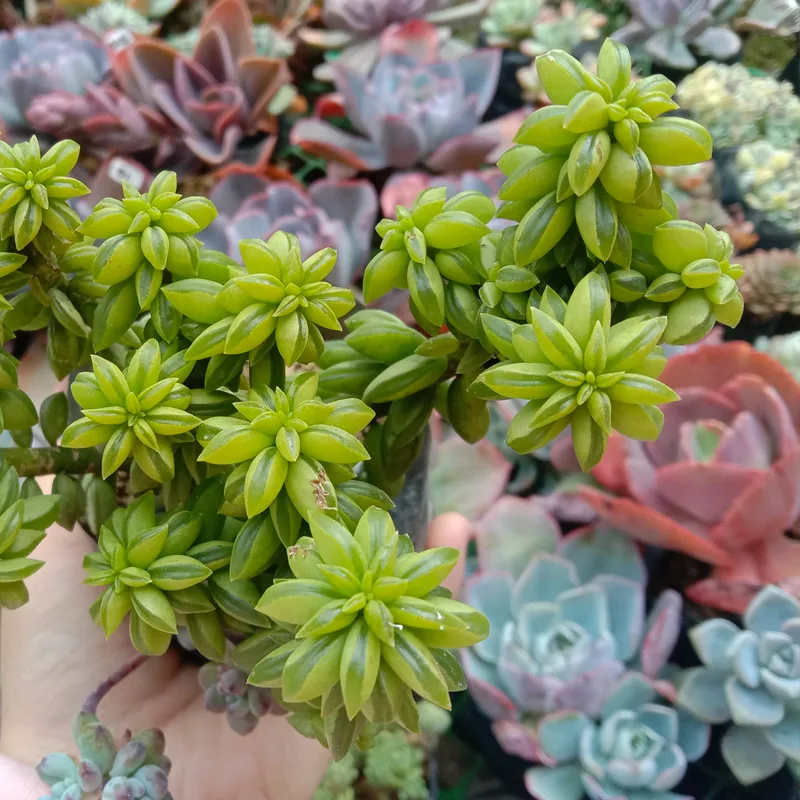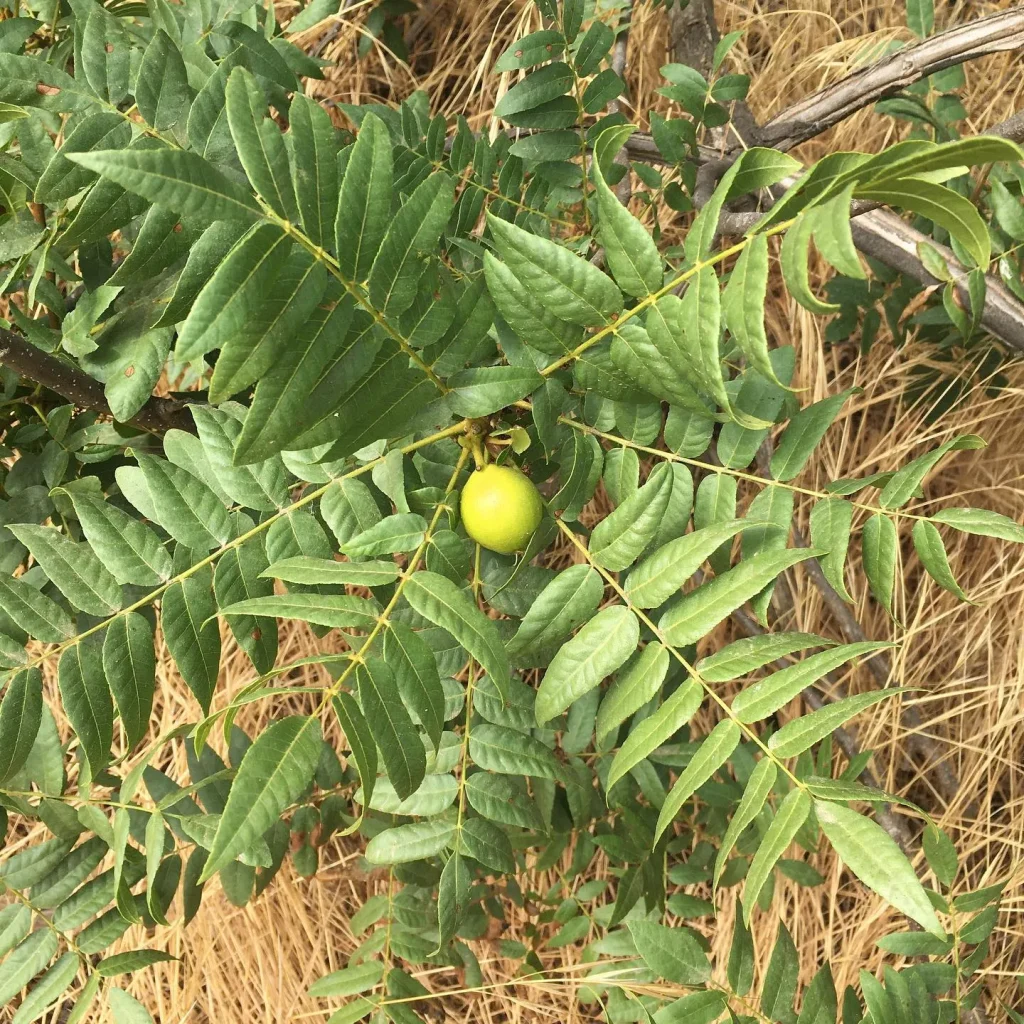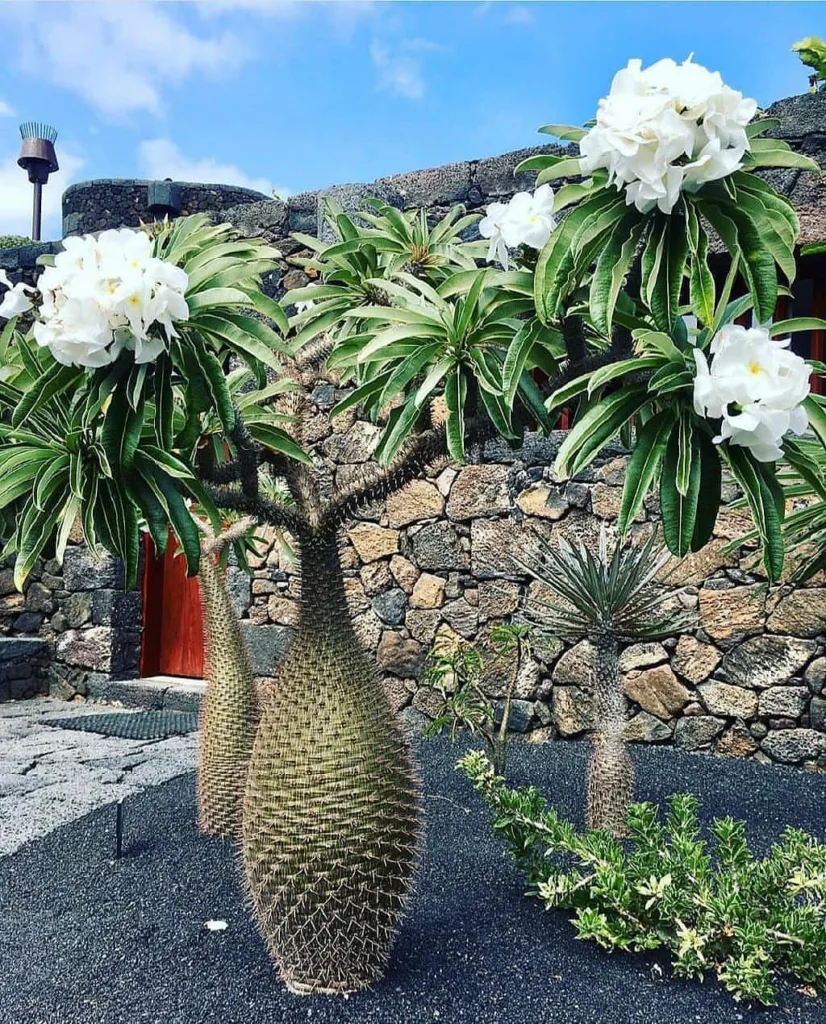
My Journey with Tomatillo
The tomatillo, or Physalis philadelphica, has been a fascinating addition to my gardening adventures. Known for its vibrant green husks and tangy fruit, this plant has brought both culinary excitement and botanical curiosity into my life. Today, I’d like to share my experience growing, harvesting, and experimenting with tomatillos in my kitchen.
95 Species in Genus Physalis
Discovering Tomatillos
My introduction to tomatillos came during a visit to a farmer’s market. I noticed these small, husk-covered fruits sitting next to the tomatoes. Intrigued, I asked the vendor about them and was instantly drawn to their versatility. From salsas to stews, tomatillos seemed to offer endless possibilities. Naturally, I had to grow them myself.
Tomatillos are native to Mexico and Central America, thriving in warm climates. They belong to the nightshade family, like tomatoes and peppers. However, unlike tomatoes, they grow inside papery husks, giving them a unique lantern-like appearance. This feature alone piqued my interest.
Cultivating Tomatillos
Growing tomatillos was a learning curve but a rewarding one. They require full sun, well-drained soil, and plenty of space since they tend to sprawl. When planting, I learned an essential detail: tomatillos need at least two plants for proper pollination. This tidbit saved me from disappointment later.
I started my seeds indoors about six weeks before the last frost. The seedlings sprouted quickly, their bright green leaves a sign of healthy growth. Once the frost passed, I transplanted them into my garden, spacing them about three feet apart. Mulching around the base helped retain moisture and suppress weeds, which was crucial during the hot summer months.
As they grew, the plants became a focal point in my garden. Their delicate yellow flowers attracted bees and other pollinators, creating a lively ecosystem. The husks formed first, like little lanterns waiting to be filled. Over time, the fruit swelled, signaling it was nearly time to harvest.
Harvesting the Fruit
Harvesting tomatillos is a tactile and visual experience. The husks turn from green to a golden hue as the fruit ripens, often splitting slightly at the base. I found it best to pick them when the husks were still green but the fruit inside was firm. Overripe tomatillos lose their tangy edge, which is essential for recipes like salsa verde.
One year, I let a few plants self-seed, and they returned the following season. This unexpected bonus made me appreciate their resilience and adaptability.
Culinary Adventures with Tomatillos
In the kitchen, tomatillos are a game-changer. Their tartness adds depth to dishes, balancing rich or spicy flavors. My favorite recipe is a classic salsa verde. Roasting tomatillos, garlic, and jalapeños until slightly charred, then blending them with cilantro and lime juice, creates a sauce that’s perfect for tacos, grilled meats, or even as a dip.
I’ve also used tomatillos in soups and stews. One standout dish is chicken tomatillo stew, where the fruit’s acidity tenderizes the meat and infuses the broth with a bright, zesty flavor. Tomatillos even shine in raw dishes like salads, lending a refreshing crispness to the mix.
Challenges and Lessons
Not everything was smooth sailing with tomatillos. One challenge was dealing with pests like aphids and flea beetles. A mix of neem oil and water helped keep infestations under control. Another hurdle was overwatering during a rainy season, which caused some fruit to split prematurely. These experiences taught me to adapt and anticipate the plant’s needs better.
Why I Recommend Growing Tomatillos
If you’re looking for a plant that’s both productive and unique, tomatillos are worth the effort. They’re not only easy to grow but also immensely rewarding. Their ability to elevate a dish with their distinct flavor makes them a staple in my garden and kitchen.
Beyond their culinary appeal, tomatillos are a conversation starter. Friends and family are often curious about the peculiar husks and the vibrant green fruit inside. Sharing recipes and gardening tips has brought me closer to my community, creating a shared appreciation for this underrated gem.
FAQS
How to grow tomatillo?
Growing tomatillos can be such a rewarding experience! I’ve found that starting them from seeds indoors about 6-8 weeks before the last frost date works best for me. Once they’ve sprouted and the weather warms up, I transplant them into well-drained soil with plenty of sunlight. I like to space them about 2-3 feet apart to give them room to grow. Tomatillos are pretty low-maintenance once they’re established, but they do benefit from regular watering, especially during dry spells. One thing I’ve learned is to provide support for the plants as they grow taller; stakes or cages can help keep them upright and make harvesting easier. And when those papery husks start to dry and split, that’s the signal that they’re ready to be picked – usually around late summer or early fall in my area. There’s nothing quite like the taste of homemade salsa verde made with freshly harvested tomatillos!
How to roast tomatillos?
Roasting tomatillos is one of my favorite ways to enhance their flavor! First, I start by preheating my oven to around 400°F (200°C). Then, I remove the husks from the tomatillos and give them a good rinse to get rid of any sticky residue. I like to slice them in half and place them cut-side down on a baking sheet lined with parchment paper or aluminum foil. Drizzling a bit of olive oil over the top helps them caramelize beautifully in the oven. I sprinkle them with a pinch of salt and maybe some garlic powder or cumin for extra flavor. They usually roast for about 15-20 minutes until they’re soft and slightly charred around the edges. Once they’re done, I let them cool for a few minutes before using them in recipes like salsa verde or adding them to soups and stews for a delicious tangy kick. The aroma that fills the kitchen while they’re roasting is simply irresistible!
How many tomatillos in a pound?
The number of tomatillos in a pound can vary depending on their size. On average, you might find about 6 to 8 medium-sized tomatillos in a pound. However, this can fluctuate depending on factors like the variety of tomatillos and their individual sizes. I’ve noticed that smaller tomatillos tend to be more abundant in a pound compared to larger ones. When I’m planning recipes, I usually estimate based on the size and weight of the tomatillos I have on hand, but it’s always a good idea to weigh them if precise measurements are needed for a recipe.
How to store tomatillos?
Storing tomatillos properly can help them stay fresh for longer. When I bring them home from the store or harvest them from the garden, I like to keep them unwashed and in their husks. This helps protect them and keep them from spoiling too quickly. I store them in a paper bag or perforated plastic bag in the refrigerator crisper drawer. They can last for up to two weeks this way, although I find they’re usually best when used within about a week. If I have an abundance of tomatillos and want to preserve them for longer, I sometimes remove the husks, rinse them, and then freeze them whole or sliced. They’re perfect for adding to dishes like soups or stews straight from the freezer. Proper storage ensures that I always have fresh tomatillos on hand for whenever inspiration strikes in the kitchen!
Can you freeze tomatillos?
Yes, you can definitely freeze tomatillos! Freezing is a great way to preserve them if you have an abundance from your garden or found a good deal at the store. I usually start by removing the husks and rinsing the tomatillos to get rid of any dirt or debris. Then, I dry them thoroughly with paper towels. Depending on how I plan to use them later, I might freeze them whole or slice them into pieces. If freezing them whole, I place them in a single layer on a baking sheet lined with parchment paper and pop them in the freezer until they’re firm. Once they’re frozen, I transfer them to a freezer-safe bag or container, making sure to squeeze out any excess air before sealing. If slicing them, I lay the slices in a single layer on a baking sheet and freeze them until solid before transferring to a bag or container. Frozen tomatillos can last for several months in the freezer, and they’re perfect for adding a burst of flavor to soups, stews, or sauces straight from the freezer!
Where to buy tomatillos?
You can typically find tomatillos at most grocery stores, especially those with a well-stocked produce section. I usually find them alongside other Mexican or Latin American ingredients like peppers, cilantro, and avocados. If you’re lucky enough to live near a farmers’ market, you might also find locally grown tomatillos during the peak growing season. I’ve even seen them occasionally at specialty food stores or international markets that carry a wide variety of fresh produce. If you’re having trouble finding them in person, you can always check online grocery delivery services or specialty food websites that offer a wide selection of fresh produce. Whether you’re making salsa verde or trying out a new recipe, fresh tomatillos can add a unique and delicious flavor to your dishes!
How long to boil tomatillos?
Boiling tomatillos is a quick and easy way to prepare them for recipes like salsa verde or soups. I usually bring a pot of water to a boil and then carefully add the husked and rinsed tomatillos. I let them boil for about 5 to 10 minutes, or until they become tender and start to change color. You’ll notice that they’ll turn from bright green to a slightly muted green as they cook. Once they’re soft and easily pierced with a fork, I remove them from the boiling water and drain them well. After they’ve cooled for a few minutes, they’re ready to be blended into a flavorful sauce or added to whatever dish I’m making. Boiling them for this amount of time helps to soften them up and mellow out their tangy flavor, making them perfect for incorporating into a variety of dishes!
Are tomatillos good for you?
Absolutely, tomatillos are quite nutritious! They’re low in calories and fat, making them a great addition to a balanced diet. Plus, they’re packed with vitamins and minerals like vitamin C, vitamin K, potassium, and fiber. Vitamin C is especially important for immune health and collagen production, while vitamin K supports bone health and blood clotting. Additionally, the fiber in tomatillos can help promote digestive health and keep you feeling full and satisfied. I love knowing that not only do tomatillos add delicious flavor to my meals, but they also provide a nutritious boost!
Can chickens eat tomatillos?
Yes, chickens can eat tomatillos! In fact, tomatillos can be a nutritious treat for chickens when offered in moderation. Chickens enjoy a diverse diet, and adding fruits and vegetables like tomatillos can provide them with additional vitamins, minerals, and fiber. However, it’s important to remember that tomatillos, like many other fruits and vegetables, should be given to chickens in moderation and as part of a balanced diet. Too much of any one food can upset their digestive system. Additionally, be sure to remove any husks or parts of the tomatillo that may be tough or difficult for the chickens to eat. Overall, tomatillos can be a tasty and healthy snack to supplement your chickens’ diet!
When are tomatillos in season?
Tomatillos are typically in season during the warmer months of the year, usually from late spring to early fall, depending on your location and local climate. In regions with milder winters, tomatillos may be available even earlier in the spring. However, their peak season tends to be during the summer months when the weather is warm and sunny. This is when you’ll often find the freshest and most abundant supply of tomatillos at farmers’ markets, grocery stores, or if you’re growing them yourself in your garden. It’s always a joy to harvest fresh tomatillos during their peak season and enjoy their vibrant flavor in a variety of dishes!
Are tomatillos toxic?
No, tomatillos are not toxic. In fact, they are safe for human consumption and commonly used in various culinary dishes, particularly in Mexican cuisine. However, it’s important to note that tomatillos, like many fruits and vegetables, belong to the nightshade family, which includes plants like tomatoes, potatoes, and eggplants. Some individuals may have allergies or sensitivities to certain nightshade plants, but for most people, tomatillos are perfectly safe to eat when prepared and cooked properly. As with any food, it’s always a good idea to consume them in moderation as part of a balanced diet.
How to clean tomatillos?
Cleaning tomatillos is a straightforward process that ensures they’re ready to use in your favorite recipes. I typically start by removing the husks, which are the papery outer coverings. Then, I rinse the tomatillos under cool running water to remove any dirt or residue. Sometimes, they can be a bit sticky, so I gently rub them with my fingers to ensure they’re clean. If there are any stubborn spots, I use a clean kitchen brush to gently scrub them. Once they’re clean, I pat them dry with a clean kitchen towel before slicing or using them in my recipes. This simple cleaning method helps ensure that the tomatillos are fresh and ready to add their unique flavor to any dish!
How to cut tomatillos?
Cutting tomatillos is quite simple once you remove the husks and clean them. Here’s how I typically do it:
Start by rinsing the tomatillos under cool running water to remove any dirt or residue.
Once they’re clean, pat them dry with a clean kitchen towel to remove excess moisture.
Place a tomatillo on a cutting board and use a sharp knife to slice off the top, where the husk was attached.
Then, you can either slice the tomatillo in half horizontally or leave it whole, depending on your recipe.
If you’re using the tomatillos in a salsa or sauce, you may want to remove the core by cutting around it with a paring knife and discarding it. This step is optional but can help reduce any bitterness.
Finally, slice or dice the tomatillos according to your recipe’s instructions. They can be chopped into cubes, sliced into wedges, or pureed, depending on how you plan to use them.
Remember to use a sharp knife and a steady hand to ensure clean, even cuts. With a bit of practice, cutting tomatillos will become second nature!
How to grow tomatillos from seed?
Growing tomatillos from seeds is a rewarding experience and relatively straightforward. Here’s how I typically do it:
Start by selecting high-quality tomatillo seeds from a reputable source. You can often find them at garden centers or online seed suppliers.
Plant the seeds indoors about 6-8 weeks before the last frost date in your area. Use seed starting trays or small pots filled with seed starting mix, which provides good drainage and aeration for the seeds.
Plant the seeds about 1/4 inch deep in the soil, and then lightly cover them with more soil.
Place the trays or pots in a warm, sunny location, such as near a south-facing window or under grow lights. Keep the soil consistently moist but not waterlogged.
Once the seedlings have emerged and developed their first set of true leaves, you can transplant them into larger pots or directly into the garden if the weather has warmed up and all danger of frost has passed.
When transplanting outdoors, choose a sunny location with well-drained soil. Space the seedlings about 2-3 feet apart to give them room to grow.
Keep the soil evenly moist throughout the growing season, especially during hot, dry weather.
As the plants grow, you may need to provide support such as stakes or cages to help keep them upright.
Tomatillos are typically ready for harvest about 70-80 days after transplanting. The fruit will develop inside papery husks, and you’ll know they’re ready to pick when the husks turn brown and split open.
By following these steps, you can enjoy a bountiful harvest of fresh tomatillos from your own garden!
Is tomatillo spicy?
Tomatillos themselves are not spicy, but they do have a unique tangy flavor with a hint of sweetness. The level of spiciness in dishes made with tomatillos depends on the other ingredients used, such as chili peppers. For example, salsa verde, a popular Mexican sauce made with tomatillos, often includes spicy peppers like jalapeños or serranos, which can add heat to the dish. However, tomatillos on their own have a mild and slightly acidic taste, making them versatile for use in a variety of recipes, whether you prefer a mild or spicy flavor profile.
Are tomatillos healthy?
Yes, tomatillos are indeed healthy! They are low in calories and fat, making them a great addition to a balanced diet. Additionally, tomatillos are packed with nutrients like vitamin C, vitamin K, potassium, and dietary fiber. Vitamin C is important for immune function and collagen production, while vitamin K is crucial for bone health and blood clotting. Potassium helps regulate blood pressure and muscle function, and dietary fiber supports digestive health and can help you feel full and satisfied. Incorporating tomatillos into your meals can provide a nutritious boost and add delicious flavor to your dishes.
How to grow tomatillos in containers?
Growing tomatillos in containers is a great option, especially if you have limited space or poor soil quality in your garden. Here’s how you can do it:
Choose a large container: Select a container that is at least 12-18 inches deep and has a diameter of about 18-24 inches. This will provide enough room for the tomatillo plant’s roots to grow and spread.
Use well-draining soil: Fill the container with a high-quality potting mix that is well-draining and rich in organic matter. This will help prevent waterlogging and ensure that the tomatillo plant receives adequate nutrients.
Plant the seeds or seedlings: Plant tomatillo seeds or seedlings in the container according to the spacing recommendations on the seed packet or plant label. If planting from seeds, sow them about 1/4 inch deep in the soil and cover lightly with more soil. If using seedlings, gently transplant them into the container, making sure to space them appropriately.
Provide support: Tomatillo plants can grow quite tall and may require support to keep them upright. Place a sturdy stake or tomato cage in the container at the time of planting to provide support as the plant grows.
Water regularly: Keep the soil evenly moist by watering the tomatillo plant regularly, especially during hot, dry weather. However, be careful not to overwater, as this can lead to root rot. Allow the top inch of soil to dry out slightly between waterings.
Fertilize: Feed the tomatillo plant with a balanced fertilizer every 2-3 weeks during the growing season to promote healthy growth and fruit production.
Provide sunlight: Place the container in a sunny location where the tomatillo plant will receive at least 6-8 hours of sunlight per day. If growing indoors, place the container near a south-facing window or provide supplemental grow lights.
Harvest: Harvest the tomatillos when they are fully ripe and the husks have turned brown and split open. Simply twist or cut the tomatillos off the plant, remove the husks, and enjoy your homegrown harvest!
By following these steps, you can successfully grow tomatillos in containers and enjoy a bountiful harvest of fresh, tangy fruit!
How to pollinate tomatillos?
Tomatillos are usually self-fertile, meaning they don’t always require insect pollination to produce fruit. However, you can still help improve fruit set by manually pollinating them. Here’s how you can do it:
Shake the plant: Gently shaking the tomatillo plant can help dislodge the pollen and encourage it to fall onto the female flowers. You can do this by gently tapping the stem or lightly shaking the branches.
Use a paintbrush: If you have access to a small paintbrush, you can use it to transfer pollen from the male flowers to the female flowers. Simply brush the inside of a male flower to collect pollen on the bristles, and then transfer the pollen to the stigma of a female flower by lightly brushing it.
Hand pollination: In some cases, you may need to manually transfer pollen between flowers to ensure successful pollination. Identify male flowers (which typically lack a small swelling at the base, representing the fruit) and female flowers (which usually have a small swelling that will develop into the fruit). Gently remove the petals from a male flower to expose the stamen with pollen. Then, carefully dab the pollen onto the stigma of a female flower.
Be gentle: When pollinating tomatillos, it’s important to be gentle to avoid damaging the delicate flowers. Take care not to disturb the flowers excessively or cause them to drop prematurely.
By manually pollinating tomatillos, you can help ensure a higher fruit set and improve your overall harvest.
When to plant tomatillos?
The best time to plant tomatillos depends on your local climate and growing conditions. In general, tomatillos are warm-season plants and should be planted after the danger of frost has passed and the soil has warmed up.
If you’re planting tomatillos outdoors, wait until all danger of frost has passed and the soil temperature has reached at least 60°F (15°C). This typically occurs in late spring or early summer, depending on your location.
If you’re starting tomatillos from seeds indoors, you can begin sowing them about 6-8 weeks before your last expected frost date. This will give the seeds time to germinate and grow into healthy seedlings before transplanting them outdoors.
Regardless of whether you’re planting indoors or outdoors, tomatillos thrive in warm, sunny locations with well-drained soil. Providing them with the right growing conditions will help ensure a successful harvest of delicious fruit!
Why are my tomatillos so small?
Several factors can contribute to small tomatillos:
Lack of Pollination: Tomatillos require pollination to produce fruit. If there’s a shortage of pollinators in your area or if weather conditions are unfavorable for pollination (such as heavy rain or extreme temperatures), it can result in poor fruit set and small tomatillos.
Nutrient Deficiency: Insufficient nutrients in the soil, particularly nitrogen, phosphorus, and potassium, can stunt plant growth and lead to small fruit development. Conduct a soil test to determine if your soil lacks essential nutrients and amend it accordingly with organic fertilizers or compost.
Overcrowding: Planting tomatillos too closely together can lead to competition for resources such as sunlight, water, and nutrients. Make sure to space your tomatillo plants according to the recommendations on the seed packet or plant label to ensure adequate room for growth.
Water Stress: Inconsistent watering, either too much or too little, can cause stress to the plants and result in small fruit development. Keep the soil evenly moist throughout the growing season, especially during hot, dry weather.
Varietal Characteristics: Some tomatillo varieties naturally produce smaller fruit than others. If you’ve chosen a variety known for its small fruit size, this may be the reason for your small tomatillos.
By addressing these potential issues and providing optimal growing conditions, you can help encourage larger tomatillo fruit development in your garden.
Are tomatillos low fodmap?
Tomatillos are generally considered low FODMAP (Fermentable Oligosaccharides, Disaccharides, Monosaccharides, and Polyols), which means they are less likely to cause digestive issues in individuals with irritable bowel syndrome (IBS) or other gastrointestinal disorders sensitive to certain types of carbohydrates. However, it’s essential to be mindful of portion sizes and individual tolerance levels, as some people may still experience symptoms after consuming tomatillos, especially in larger quantities. As always, it’s best to consult with a healthcare professional or registered dietitian for personalized dietary advice tailored to your specific needs and tolerances.
How to save tomatillo seeds?
Saving tomatillo seeds is a simple process that allows you to preserve your favorite varieties for future planting. Here’s how you can do it:
Select ripe tomatillos: Choose fully ripe tomatillos from healthy, disease-free plants. Look for tomatillos that have reached their mature size and have turned a slightly yellowish or golden color.
Extract the seeds: Cut the ripe tomatillos in half and scoop out the seeds and surrounding gel-like substance with a spoon. Place the seeds and gel into a small bowl or container.
Ferment the seeds (optional): To remove the gel coating from the seeds, you can ferment them. Place the seeds and gel in the bowl and cover them with water. Allow the mixture to ferment at room temperature for 2-3 days, stirring occasionally. During fermentation, the gel coating will break down and separate from the seeds.
Rinse and dry the seeds: After fermenting, pour the seed mixture through a fine-mesh sieve to separate the seeds from the gel. Rinse the seeds under cool running water to remove any remaining gel residue. Spread the seeds out in a single layer on a paper towel or clean cloth to air dry completely. Make sure to label the drying area with the seed variety to avoid mixing them up.
Store the seeds: Once the seeds are completely dry, transfer them to a small envelope or airtight container. Store the seeds in a cool, dry place away from direct sunlight. Properly stored tomatillo seeds can remain viable for several years.
By following these steps, you can successfully save tomatillo seeds from your garden for future planting seasons.
Are tomatillos keto?
Yes, tomatillos can be included in a ketogenic (keto) diet, as they are relatively low in carbohydrates. A 100-gram serving of tomatillos contains about 3.9 grams of carbohydrates, with a significant portion of that coming from fiber. Since the keto diet typically restricts carbohydrate intake to induce a state of ketosis, tomatillos can be incorporated into keto-friendly recipes in moderate amounts. They add flavor and texture while contributing relatively few net carbohydrates, making them a suitable option for those following a ketogenic eating plan. As always, it’s essential to consider your overall macronutrient intake and individual dietary preferences when planning meals on a ketogenic diet.
Can guinea pigs eat tomatillos?
Guinea pigs can eat tomatillos in moderation as an occasional treat, but they should not be a regular part of their diet. Tomatillos are safe for guinea pigs to consume, but they are relatively acidic and can cause digestive upset if fed in large quantities. It’s essential to introduce new foods slowly and in small amounts to avoid gastrointestinal issues. Additionally, always ensure that tomatillos are fresh, clean, and free from any pesticides or contaminants before offering them to your guinea pig. Remember that the bulk of a guinea pig’s diet should consist of high-quality hay, fresh vegetables, and a small amount of commercial guinea pig pellets to meet their nutritional needs. If you have any concerns about introducing tomatillos or other foods to your guinea pig’s diet, consult with a veterinarian experienced in exotic pet care for guidance.
Can you pickle tomatillos?
Yes, you can pickle tomatillos! Pickling tomatillos is a delicious way to preserve their tangy flavor and enjoy them in various dishes. Here’s a simple recipe to pickle tomatillos:
Ingredients:
1 pound (about 450g) tomatillos, husks removed and washed
1 cup white vinegar
1 cup water
2 cloves garlic, peeled and smashed
2 teaspoons kosher salt
1 teaspoon sugar
1 teaspoon whole black peppercorns
1 teaspoon dried oregano
1 bay leaf
Instructions:
Sterilize your canning jars and lids by boiling them in water for a few minutes or running them through a dishwasher cycle.
Prepare the tomatillos by cutting them into halves or quarters, depending on their size.
In a saucepan, combine the white vinegar, water, garlic, salt, sugar, peppercorns, oregano, and bay leaf. Bring the mixture to a boil over medium heat, stirring until the sugar and salt are fully dissolved.
Add the tomatillos to the boiling vinegar mixture. Reduce the heat to low and simmer for about 5 minutes, or until the tomatillos are slightly softened but still firm.
Using sterilized tongs, carefully transfer the tomatillos and garlic cloves to the sterilized canning jars, leaving about 1/2 inch of headspace at the top of each jar.
Pour the hot vinegar mixture over the tomatillos in the jars, covering them completely. Use a clean, sterilized knife or spatula to remove any air bubbles from the jars.
Wipe the rims of the jars with a clean, damp cloth to remove any residue. Place the sterilized lids on the jars and screw on the bands until they are fingertip tight.
Process the jars in a boiling water bath for about 10 minutes to ensure they are properly sealed and preserved. Remove the jars from the water bath and let them cool completely before storing them in a cool, dark place.
Allow the pickled tomatillos to sit for at least 1 week before consuming to allow the flavors to develop fully. Once opened, store any leftover pickled tomatillos in the refrigerator for up to several weeks.
Enjoy your homemade pickled tomatillos as a tasty condiment or addition to salads, sandwiches, tacos, and more!
Final Thoughts
Growing tomatillos has been more than just a gardening project—it’s been a journey of discovery and creativity. From the thrill of seeing those first husks form to the satisfaction of blending a homemade salsa verde, every step has been an adventure. If you’ve ever considered growing tomatillos, I encourage you to give them a try. They’re more than just a plant—they’re a gateway to flavor and fun.
Whether you’re a seasoned gardener or a beginner, I believe tomatillos will add something special to your garden and your table.
If i die, water my plants!



